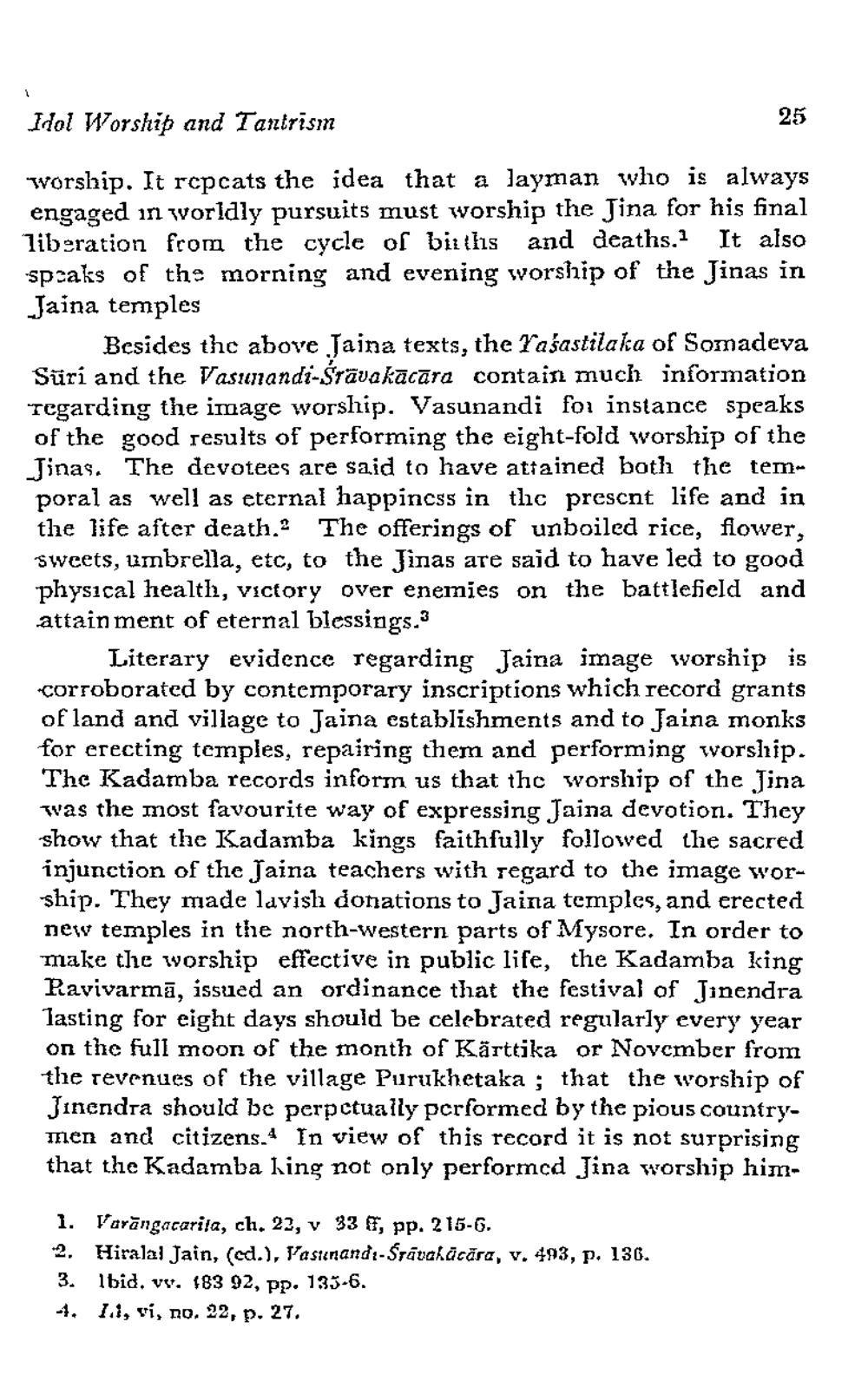________________
Idol Worship and Tantrism
25
worship. It rcpcats the idea that a layman who is always engaged in worldly pursuits must worship the Jina for his final liberation from the cycle of births and deaths. It also speaks of the morning and evening worship of the Jinas in Jaina temples
Besides the above Jaina texts, the Yašastilaka of Somadeva Sūri and the Vasmandi-Śravakācāra contain much information Tcgarding the image worship. Vasunandi for instance speaks of the good results of performing the eight-fold worship of the Jinas. The devotees are said to have attained both the temporal as well as eternal happiness in thc present life and in the life after death. The offerings of unboiled rice, flower, sweets, umbrella, etc, to the Jinas are said to have led to good physical health, victory over enemies on the battlefield and attainment of eternal blessings.3
Literary evidence regarding Jaina image worship is corroborated by contemporary inscriptions which record grants of land and village to Jaina establishments and to Jaina monks for erecting temples, repairing them and performing worship. The Kadamba records inform us that thc worship of the Jina was the most favourite way of expressing Jaina devotion. They show that the Kadamba kings faithfully followed the sacred injunction of the Jaina teachers with regard to the image worship. They made lavish donations to Jaina temples, and erected new temples in the north-western parts of Mysore. In order to make the worship effective in public life, the Kadamba king Pavivarmā, issued an ordinance that the festival of Jinendra Tasting for eight days should be celebrated regularly every year on the full moon of the month of Kärttika or November from the revenues of the village Purukhetaka ; that the worship of
Jinendra should be perpctually performed by the pious countrymen and citizens. In view of this record it is not surprising that the Kadamba king not only performed Jina worship him
1. Varāngacarila, ch. 22, v 33 f, pp. 215-6. -2. Hiralal Jain, (ed.), Vasunand:- Srāvakācāra, v. 493, p. 136. 3. Ibid. vv. 483 92, pp. 133-6. 1. Li, vi, no. 22, p. 27.




